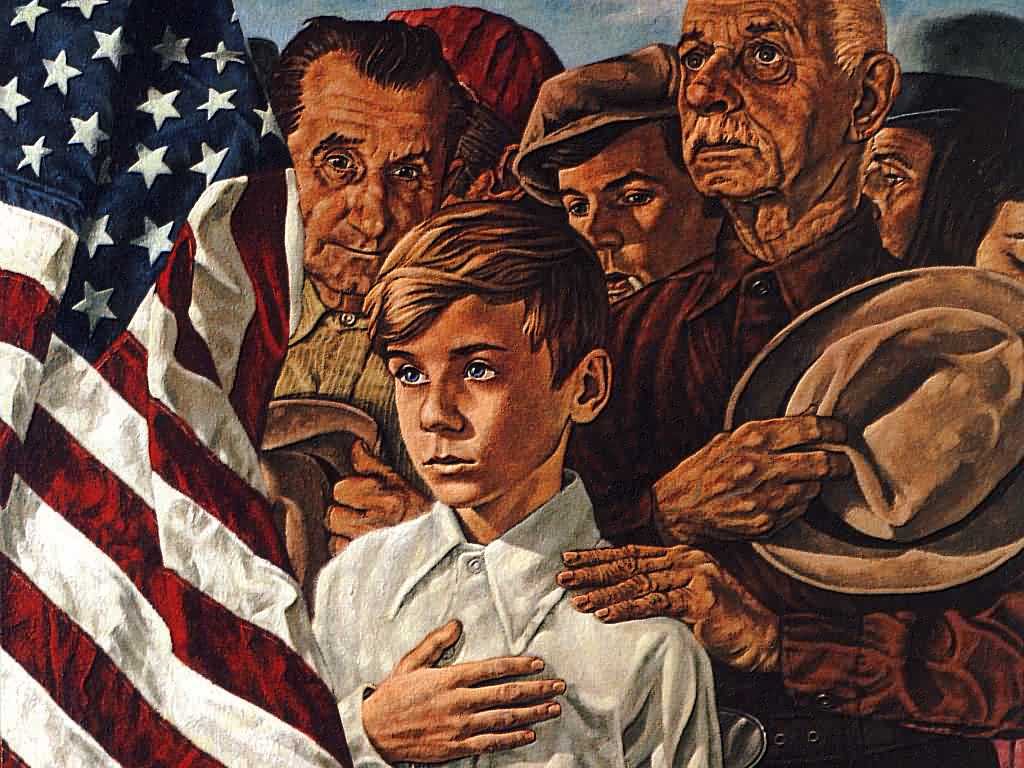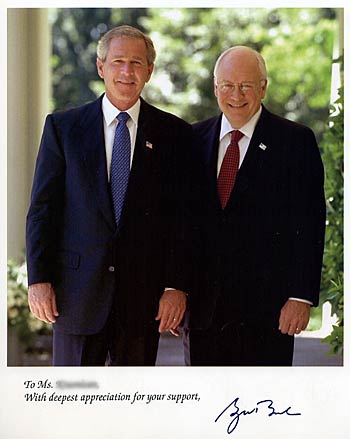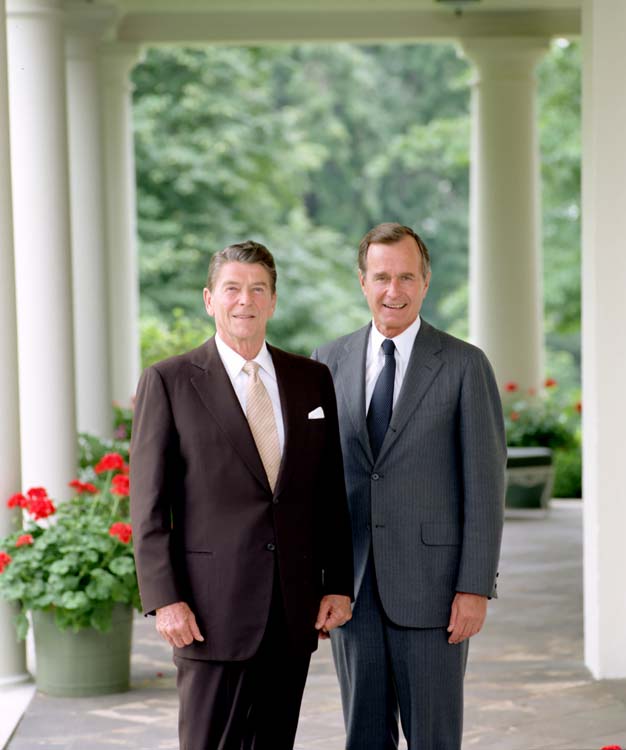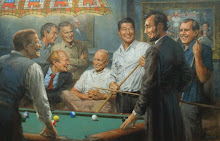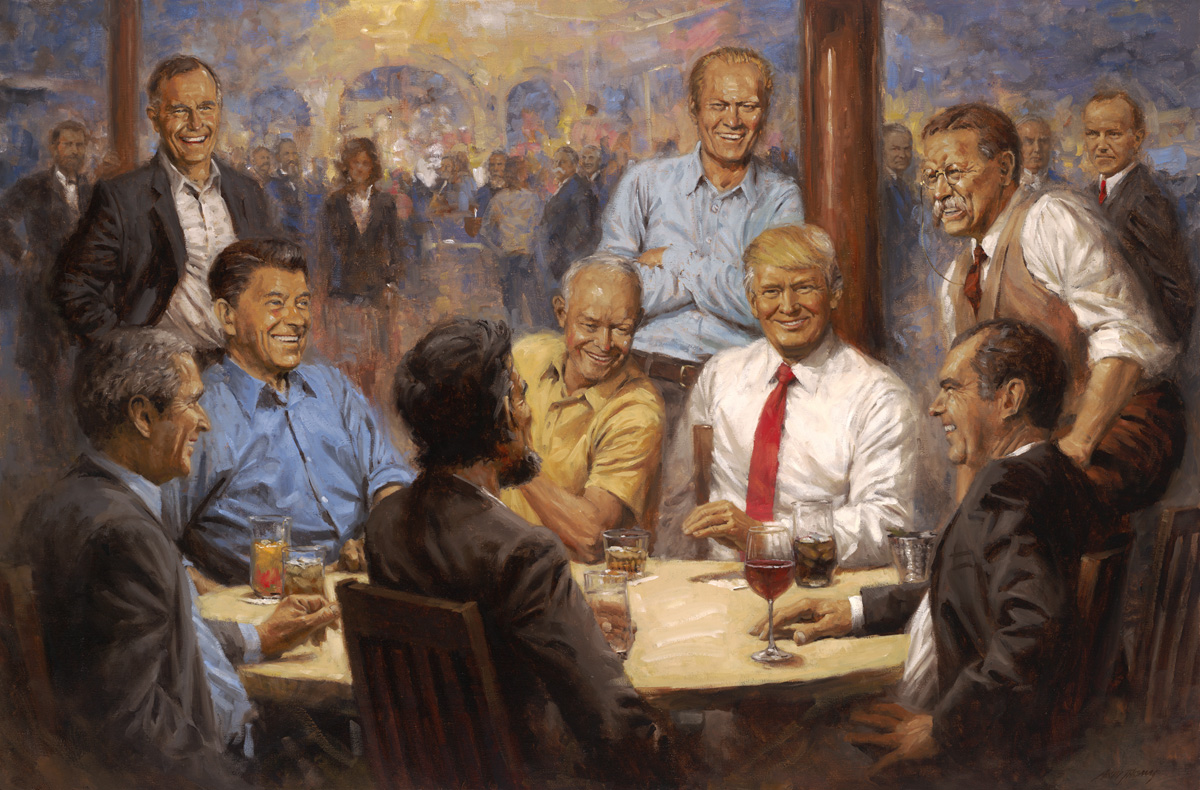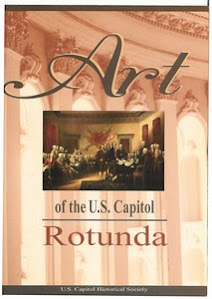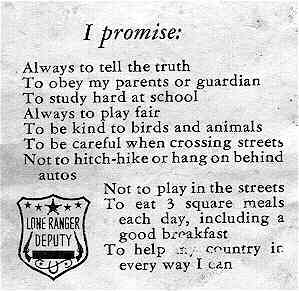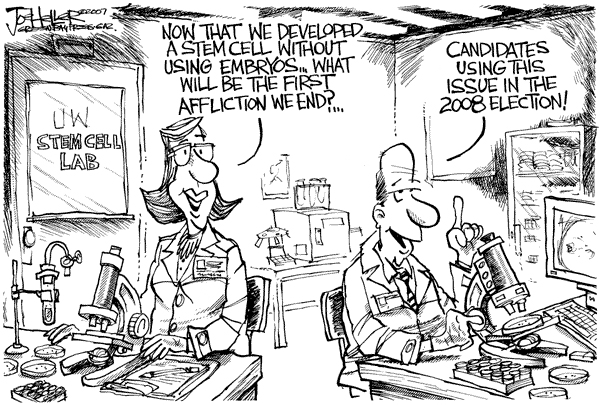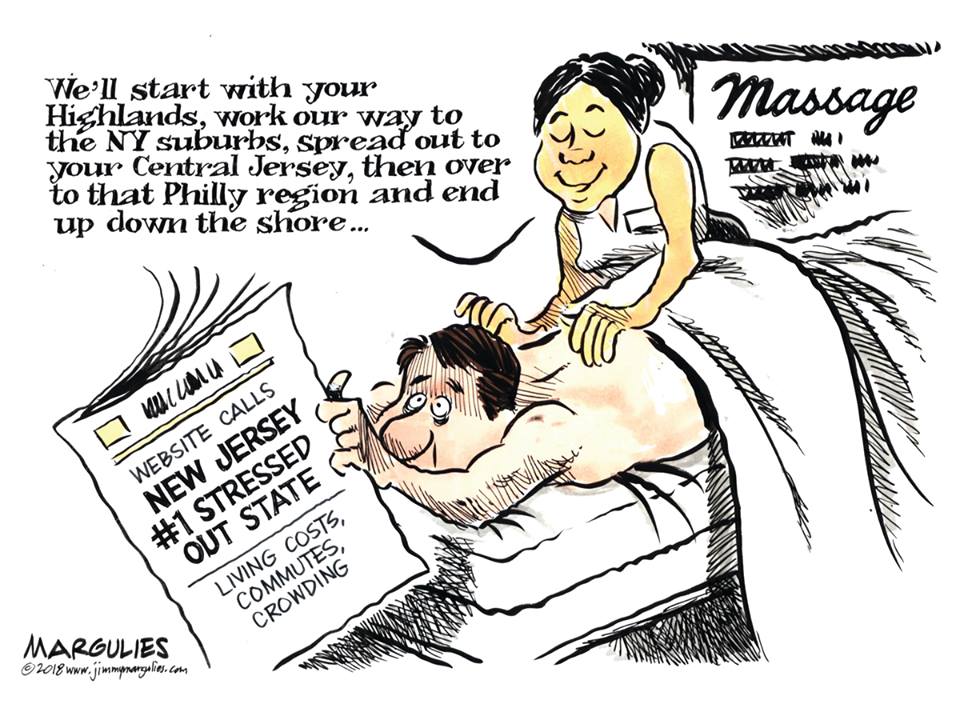Source: https://writtent.com/blog/stuck-writing-35-sure-fire-copywriting-tips-tricks-pros/
March 26, 2017
With the constant demand for more quality content and the growing need for effective copywriting - one to attract visitors, the other to convert them to leads and customers - consistently producing powerful, high-quality copy is tough.
To help you avoid burnout, beat writer’s block, and ultimately get more results, here are 35 sure-fire copywriting tips from some of the greatest copywriters and advertisers.
1. Do more research.
All the copywriting and advertising greats know the value of research. David Ogilvy, the Father of Advertising, said to “stuff your conscious mind with information” so you have plenty to work with. One of Ogilvy’s students, legendary copywriter Gary Bencivenga (who also studied with several other great copywriters), said:
“The best copywriters are the most tenacious researchers. Like miners, they dig, drill, dynamite, and chip until they have carloads of valuable ore. John Caples advised me once to gather seven times more interesting information than I could possibly use... Research is the infallible cure for writer's block.”
The more information you have, the more possibilities you can play with.
Image source
2. Add more interest.
When you don’t know what to write next or how to make your draft better, one copywriting hint is to add interest. As David Ogilvy once said, “Tell the truth but make truth fascinating. You know, you can’t bore people into buying your product. You can only interest them in buying it.”
So how do you make your copy more interesting and fascinating?
-
Make it scannable and visually appealing
-
Use your distinct personality or unique selling proposition
-
Make it entertaining (as long as the humor furthers your goal)
-
Incorporate controversy
-
Newsjack
-
Tell stories
3. Inject personality.
Every writer and every brand has their own unique voice, style, and unique selling proposition (USP). Ogilvy knew that building a “sharply defined personality” is the best way (and sometimes the only way) to differentiate yourself from the competition and gain a larger market share. Before publishing anything, make sure it clearly demonstrates your brand personality - including voice, style, word choice, values, and USP - as well as matches your target audience’s needs and desires.
4. Refine your headline.
On the average, five times as many people read the headline as read the body copy. When you have written your headline, you have spent eighty cents out of your dollar. ~ David Ogilvy ~
In their books on copywriting and advertising, legends like Ogilvy and John Caples wrote whole chapters on crafting powerful headlines. Here are a few of the best tips on copywriting effective headlines and subject lines to get you started:
-
Copyblogger’s Magnetic Headlines training
-
Write the copy first, then pull out the strongest phrases to use as headlines and subheadings. This ensures your headlines match your copy.
-
Opt for straightforward, simple headlines over tricky or clever ones.
-
Remember the 4 U’s: Urgent, Unique, Useful, Ultra-specific.
-
Give readers a benefit - then make sure you deliver in the body copy.
-
Paint a vivid picture or stimulate an intense emotion. These grab attention and add interest, and they can instantly convey the most important benefit.
-
Use David Garfinkel’s Shortcut Test: If you posted the headline and a phone number as a classified ad, would it generate inquiries?
Copywriting Hall-of-Famer John Caples divided successful headlines into three classes. In his experience, the third best headlines used curiosity, the second-best used news, and the best of all used the reader’s self-interest. He suggested that writers “try to get self-interest into every headline” and “avoid headlines that merely provoke curiosity... curiosity by itself is seldom enough.”
5. Simplify your content.
Image source
Simplifying your copy doesn’t necessarily mean ditching the technical jargon or writing to a ninth-grader’s comprehension level.
It means making your message clear and concise so your target audience understands your offer and benefits as quickly as possible.
Famous copywriter Eugene Scwartz put it this way: “Write to the chimpanzee brain - simply and directly.”
6. Give your audience what they want.
Copywriter Gary Halbert tells a story about the best advantages a restaurant could have. It wasn’t great food, low prices, or a good location. The key to any restaurant’s success is the starving crowd. You start with a group of people who have demonstrated their hunger, and then you satisfy that need.
You can’t create desire; you can only stoke and channel it. Great content and copy gives your audience exactly what they already want.
7. Tell a story.
A 26-year-old raw copywriter sat down in 1926 to write an ad for the U.S. School of Music selling home-study courses for would-be musicians. He could have used a simple benefit headline, like Master the Piano at Home in 30 Days - Without a Teacher!
But he didn’t.
He dug deeper. He knew that mastering an instrument is hard work, and that the real reasons people do it is to be popular, to win their friends’ admiration and envy, and to find happiness. That copywriter realized the real product of the ad wasn’t a course or the ability to play, but popularity and happiness. With that in mind, he still could have used the classic how-to benefit headline, such as How to Be the Most Popular Guy of Any Party!
But he didn’t.
He knew that simply describing musicians’ popularity wouldn’t be enough. He needed the headline to resonate emotionally with prospects. He needed to create a vivid image of a buffoon--the kind of person no one ever dreamed could play - who left his friends stunned speechless by his performance.
His headline was “They Laughed When I Sat Down At the Piano But When I Started to Play!”
Then he used half of his entire ad space to tell the story of personal triumph, seducing prospects into reading the whole ad and giving them a vision of the possibilities.
image source
That copywriter was John Caples, who was inducted into both the Copywriters Hall of Fame and the Advertising Hall of Fame in the 1970s. That ad he wrote in the ‘20s launched his career and is still considered one of the pillars of the copywriting field.
It worked because it captured prospects’ attention, drew them into a world they desperately wanted to be part of, and left them hungry for more. The story presented the product as doing most of the hard work of learning to play and overcame the objection that you need a special talent to play (since even the buffoon could do it).
Consider these storyselling examples from CrazyEgg and these tips on mastering storyselling from Forbes.
8. Make the copy visually appealing.
Successful advertiser Leo Burnett developed simple icons to symbolize easy-to-understand product benefits and values (such as the Jolly Green Giant and the Pillsbury Doughboy). One of his rules of copywriting was to “make it inviting to look at” - since if the ad didn’t invite and entice the eye, no one would read it.
The same is even more true today, with the flood of content online, shrinking attention spans, and skimming readers. If your content doesn’t have what David Garfinkel calls “eye appeal,” it won’t get read or shared.
So how do you give your copy eye appeal?
-
a good typefont that’s easy on the eyes and big enough to read
-
short paragraphs
-
variety in the text, e.g. bolding, italicizing, underlining
-
bulleted or numbered lists
-
indented paragraphs or quotes
-
headings and subheadings
-
visual cues, i.e. arrows pointing at the form button
9. Don’t be clever.
As writers and content marketers, we like to play with our words. Sometimes that’s okay, depending on your brand personality and the type of content. But most of the time, being clear and concise will return greater rewards than being clever.
As million-dollar copywriter Gary Bencivenga said:
“Effective copywriting is salesmanship in print, not clever wordsmithing. The more self-effacing and invisible your selling skill, the more effective you are. Copywriters who show off their skills are as ineffective as fishermen who reveal the hook.”
10. Break the rules.
This copywriting tip might seem counter-intuitive, but the best writers know when and how to break the rules of proper grammar, syntax, and mechanics. As David Garfinkel said, “I've advised many clients who feel compelled to use ‘proper English’ in their sales letters… to ‘fire your English teacher!’"
Speaking directly to your prospect in language they’ll easily understand is always more important than writing things by the book.
11. Keep a swipe file.
One of the most well-known copywriting hints is to keep a swipe file--a collection of emails, ads, and other copy or content you love or that performed well. That way, whenever you’re stuck on a tough headline or don’t know what to try next, you can glance through your collection and jumpstart your creativity.
12. Have a purpose behind everything you write.
With the content marketing boom, lots of marketers create content for content’s sake. Having a large library of content can be incredibly useful, but only if each piece has a purpose and fits in the overall plan.
As David Ogilvy said, “In the modern world of business, it is useless to be a creative, original thinker unless you can also sell what you create.” Witty, clever content by itself doesn’t do you any good. Make sure your content engages your audience, builds trust, and encourages sales first.
13. Avoid distraction.
Sometimes when you’re stuck writing, the real culprit isn’t a lack of ideas or words, but not enough time to devote to the project. If you’re having trouble, try this copywriting hint and productivity hack from Eugene Schwartz.
First, close the door and turn off your phone. Close or sign out of email and social media. Eliminate as many distractions as possible.
Then sit your chair and set a timer for 33 minutes. The only things you can do during that half hour are think about the writing project and get to work on it.
image source
When the timer goes off, take a 10-minute break and repeat.
With this system, Schwartz wrote about 3 hours a day, 5 days a week--and become one of the highest-paid copywriters of the 1950s and ‘60s.
14. Think outside the box.
David Ogilvy said, “Talent, I believe, is most likely to be found among nonconformists, dissenters, and rebels.” Don’t be afraid to try something different and new, because it just might work. Find and form relationships with the nonconformists, dissenters, and rebels in your field and see what great ideas might spark. Unhook your rational thought process and allow your subconscious to make connections between ideas. That’s when you’ll come up with the best content and copywriting ideas.
15. Speak your ideal customer’s language.
Ogilvy also said, “If you’re trying to persuade people to do something, or buy something, it seems to me you should use their language, the language they use every day, the language in which they think. We try to write in the vernacular.”
Speaking in their language helps prospects get to know, like, and trust you because they recognize themselves in your words. That helps you connect and build relationships with them, and more easily persuade them.
If you’re stuck writing, go back and make sure everything sounds the way your customers think. Put yourself in their shoes. Make yourself invisible. Not only will your copy get better for the exercise, but getting out of your own way like this can jumpstart new ideas and illuminate what should come next.
16. Focus on benefits.
Every great copywriter advises other writers to emphasize benefits, not features:
-
John Caples said, “The best headlines are those that appeal to the reader benefits.”
-
Eugene Schwartz said, “Talk about what your product ‘does’, not ‘is’ - and demonstrate this.”
-
Bob Bly said, “Virtually all successful copy discusses benefits.”
Everybody talks about this copywriting tip because it works, and it’s a relatively easy fix if your current copy isn’t doing so well. Make every feature you mention leads to a benefit.
17. Make prospects feel like they’re already getting something.
Another great tip about copywriting from Schwartz is to make gratification instantaneous. When prospects get something valuable from you just by reading, they learn to trust you and believe that you deliver what you promise. This copywriting trick gives prospects a taste so that real desire fuels their actions, not just curiosity, and it’s also one of the reasons content marketing works so well.
18. Ask questions that get readers to say “yes.”
A classic persuasion technique used by Socrates and used car salesmen, this theory states that the more often you can get prospects to say “yes,” the more likely they are to say “yes” again. A-list direct-response copywriter Parris Lampropoulos uses this technique a different way: “In sales copy, I’ll throw in a question here and there, but more often, I’ll phrase it as a statement. You know – one of those statements that get prospects nodding their heads.”
If they’re saying “yes” and nodding their heads, you’ve hooked them.
19. Appeal to emotion.
Early in his career, Lampropoulos saw a particular copywriting gig as his chance to make it to the big leagues, so he pulled out all the stops. In addition to packing it with proof elements, testimonials, and price justifications, he also “worked every possible emotion the reader might have.” It was one of his most successful direct-mail packages, and it mailed for four years.
The trick to incorporating emotions in your copy is to ask yourself: what is my prospect’s deepest desire right now? There are lots of emotions you can appeal to, but the key driving emotions - the strongest, deepest emotions not governed by rational thought - are:
-
fear
-
greed
-
guilt
-
exclusivity
-
anger
-
salvation
-
flattery
Image source
20. Try a unique angle or hook.
When asked about his process for writing stock stories and promotions for financial newsletters, Parris Lampropoulos said:
“First, I go to Fortune, Forbes and Business Week and read every article I can find on the company being recommended. Then I do something unusual: I sit down and start writing "fascination" bullets for those articles. By doing that, I find all kinds of unexploited sales angles. Those angles lead me to the "hook" for the stock story. And once I’ve got the hook, the story almost writes itself.”
The blogs and magazines you look at may be very different, but the principle is the same: start by researching good sources, then delve deeper to find the different, interesting, unusual, or unheard-of. Those golden nuggets become the angle or hook you need to catch attention and generate interest.
21. Hunt down the right words.
One of the oldest copywriting tips is to not use adjectives and adverbs to make an okay word good enough. Track down the very best word to convey the message, emotion, or imagery. It makes your copy stronger, makes you as the writer more invisible so the reader can feel or see or understand what you want to convey that much better.
As Mark Twain famously said, “The right word is the difference between lightning and lightning bug.”
22. Use active voice.
Stronger and usually shorter than passive construction, active voice is easier to understand and conveys your message better and faster. Passive voice makes you sound weak, reactive, or acted upon, while active voice takes charge.
For example, the passive sentence “Over 5000 customers have been helped by our services” is much stronger in the active voice: “We have helped over 5000 customers.”
23. Replace “weasel words” with imperatives and promises.
Avoiding commands and strong words like “will” and “can” are a way of protecting yourself, but it makes you sound wishy-washy and unable to deliver. Go through your copy and replace every weasel word (e.g. may, hope, could, perhaps, etc.) with the appropriate imperative or promise word (e.g. will, can, do, etc.). This strengthens your copy and makes you sound confident, which builds prospects’ trust.
24. Back up your claims.
You’ll sound even more confident and build more trust and credibility when you prove your case with reliable data. Back up your benefits and other claims with proof. This wins over skeptic readers and shows that you really do know what you’re talking about. A few copywriting ideas to back up your claims might include:
-
facts and statistics
-
methodologies
-
testimonials
-
case studies
-
success stories
25. Use specific examples.
Resume writers and school counselors tell you to include specific numbers in your resume because they quickly convey your experience and skills. This copywriting trick works in just about everything you write, and it makes your copy stronger by attracting attention and making you seem more credible - and memorable. As Bob Bly, one of America’s top copywriters, says: “Since so much advertising is vague and general, being specific in your copy sets it apart from other ads and creates interest.”
26. Evaluate your copy’s ratio of “you” vs. “we.”
Effective content marketing and copywriting always starts with the customer. That’s why no one wants to read brochures or websites that only talk about the company - and why copy that speaks directly to the prospect gets more results. When you make sure your copy uses “you” at least twice as often as “we” or your brand name, you’ll naturally focus on your customer’s needs and desires. Your copy will be stronger, and you’ll get more traffic, leads, and sales.
Derek Halpern of Social Triggers is a great example. In his post about creating amazing About Us pages, he explains why it’s important to include a benefit-driven headline... benefit-driven introduction... and social proof. To see his advice in action, check out his Social Triggers About page. There’s a lot of “I” and “Social Triggers” in there--but there’s also tons of “you.” He talks directly to his audience so they know exactly what they can expect from him.
27. Incorporate the fundamentals of persuasive copywriting.
According to “America’s Top Copywriter” Bob Bly, the fundamentals of persuasive copwriting are:
-
Gains attention
-
Focuses on the customer
-
Stresses benefits
-
Differentiates you from the competition
-
Proves its case
-
Establishes credibility
-
Builds value
-
Closes with a call to action
Depending on your product, prospect, and type of content, you may not need to use all eight. For example, established brand names might not need to worry about proof and credibility. But keeping them in mind while you write and revise can help you create stronger, more compelling copy.
28. Use imagery.
Imagery helps readers instantly understand a situation or benefit (plus, it makes your copy more interesting to read). Copywriter David Garfinkel says one of his favorite headlines/slogans is this one for a plumbing service:
Call Roto-Rooter - that's the name -
And away go troubles, down the drain!
Describing it, he says: “Wow - is that perfection in a couple of lines, or what? You get a call to action, company identification, and a visual description of the benefit.”
The imagery of the drain instantly conveys the benefit. It’s also memorable, always a plus in great content.
image source
29. Lead with your strongest point.
So many writers save their most potent points for last, when it should be the other way around. More prospects will read the beginning than the end, so putting your best idea first is more persuasive. The strongest point can often grab attention better than weaker points, making it ideal for the beginning.
30. Build credibility.
Another very successful copywriter, Steve Slaunwhite, said:
“In my experience, the number one key to persuasion is this: communicate trust. If you do this well, you at least have a chance at engaging and persuading the reader. If you don’t do this well, however, no amount of fancy copywriting techniques will save you.”
You can build credibility and trust by mentioning credentials like:
-
strong guarantee, return, and privacy policies
-
testimonials and data about your track record
-
years in business
-
innovations and awards
-
publications
-
membership and participation in professional societies
-
seals of approval
-
agency ratings
-
independent survey results
-
media coverage
31. Mention the most important point at least three times.
This is Winston Churchill’s “tremendous whack” theory, which says to not be subtle or clever about your important point. Richard Perry says, “Use a pile driver. Hit the point once. Then come back and hit it again. Then hit it a third time—a tremendous whack.”
Successful writers and marketers use the power of three all the time.
-
Derek Halpern advises putting an opt-in form in three places on your About Page.
-
Lots of email marketers include three links in an email to drive clicks (just look at a few of the email newsletters you get).
-
Long-form landing pages often have three CTA areas.
If something’s important, say it at the beginning, again in the middle, and again at the end.
32. Stress value.
America’s top copywriter Bob Bly says, “It’s not enough to convince prospects you have a great product or a superior service. You must also show them that the value of your offer far exceeds the price you are asking for it.”
Showing the overall value is also known as the “drop-in-the-bucket” technique, where the cost of purchase is a tiny thing compared to the benefits your offer delivers. This works for email subscriptions and blog comments as well as product sales, since readers give up something they value--their time, email address, privacy--to get something of value in return.
This fundamental copywriting tip works really well in conjunction with tip #17, providing instantaneous gratification. If they already get value from your content, the value of your offer is almost certainly worth the cost.
33. Include a strong call to action.
If you don’t specifically ask people to do something, chances are they won’t do it. Everything you write, from blog posts to emails to social updates to landing pages, should close with a call to action (CTA). To get the most out of your CTAs, make sure they:
-
match the buyer persona and stage of the buying cycle
-
offer something of value
-
offer prospects something they actually want
-
reiterate your most important benefit or emotional driver
34. Make it personal.
Copywriter David Garfinkel says that successful content is personal, and it doesn’t use stilted formal English or “stickler” language of a school assignment. He recommends writing in a more personal, relaxed style, as if you’re having a one-on-one conversation with your prospect.
Research indicates that personalized emails convert better than mass messages, and most internet marketers know that the most successful blogs employ the relaxed, personal style.
35. Organize your writing with a formula.
AIDA is a popular sales letter format for a reason - it works. Using a framework like attention-interest-desire-action (or John Caples’ version, attention-interest-action) makes it easy to know exactly what to write next.
Here are a few other frameworks and formulas to help you get started:
-
Dan Kennedy’s favorite copywriting formula is PAS, or Problem-Agitate-Solution. It works because people are more likely to act to avoid pain than get gain.
-
Copyblogger promotes a simple 1-2-3-4 framework that helps you focus on the customer and incorporate the most important persuasion fundamentals.
-
Essential copywriting formulas and checklists to make your copy as strong and powerful as possible.
What copywriting tips and tricks do you use?We’d love to hear what works for you!
Helen Nesterenko is the founder and CEO of Writtent.com that is all about finding amazing writers and creating great content.
Other posts by Helen Nesterenko















